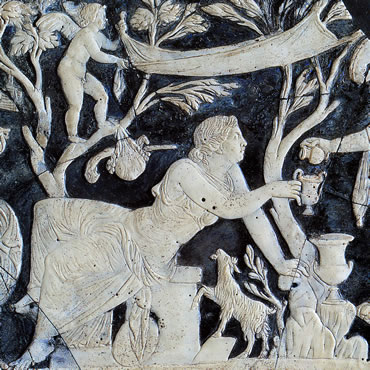14. Sand and glass

In Roman times glass was made by melting together a blend of natural raw materials, using techniques which remained substantially unchanged through at least the 7th century AD.
The primary components of this mixture were sand and soda, a natural sodium carbonate. According to ancient literary sources, one of the few sands from which glass could be made came from the mouth of the Volturno River in the Campania region.
The considerable amount of raw glass found in Pompeii seems to demonstrate the existence of a melting and processing center within the city.
The manufacture of glass originated in Mesopotamia in the middle of the second millennium BC. A turning point in this technology was the invention of the technique of glass-blowing using a tube, which permitted the rapid production of hollow objects either freehand or in a mould. Glass was quickly recognised as an ideal material for holding foods, beverages, and perfumes, and glass containers became a frequent subject in paintings.
In the Roman period, glass was made by heating to about 800 degrees centigrade a mixture of salt of soda and a sand containing silica and calcium carbonate, the latter found at the mouths of some rivers, including the Volturno in Campania. The paste that was produced was raw glass, which was then melted again and formed into jugs, cups, vessels for ointments, jewels, and window panes. Coloured glass and mosaic tesserae were made by adding a variety of minerals, in a liquid paste form, to the melted glass.

